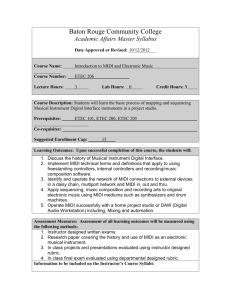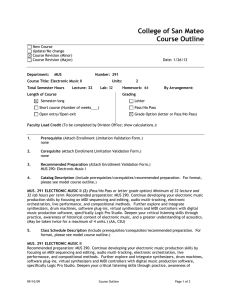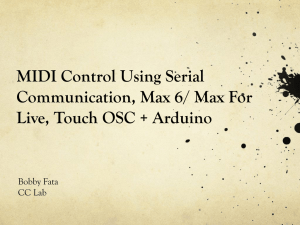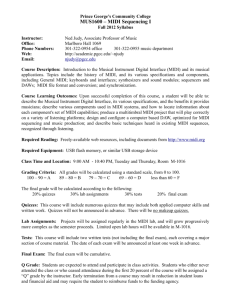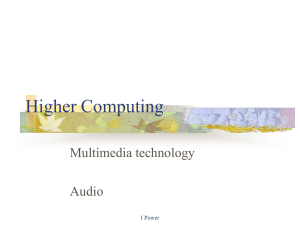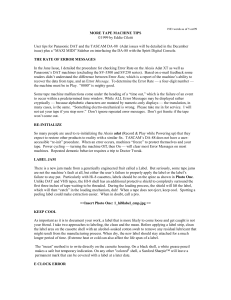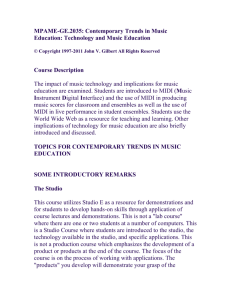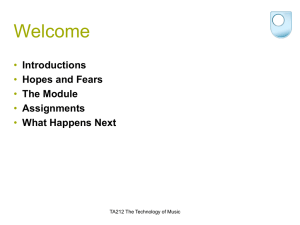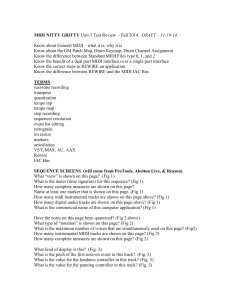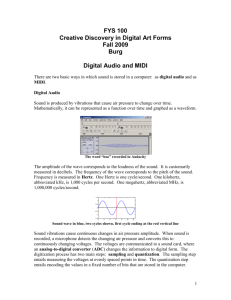Assignment 1 Report/TNB - TrystProductions.org.uk
advertisement
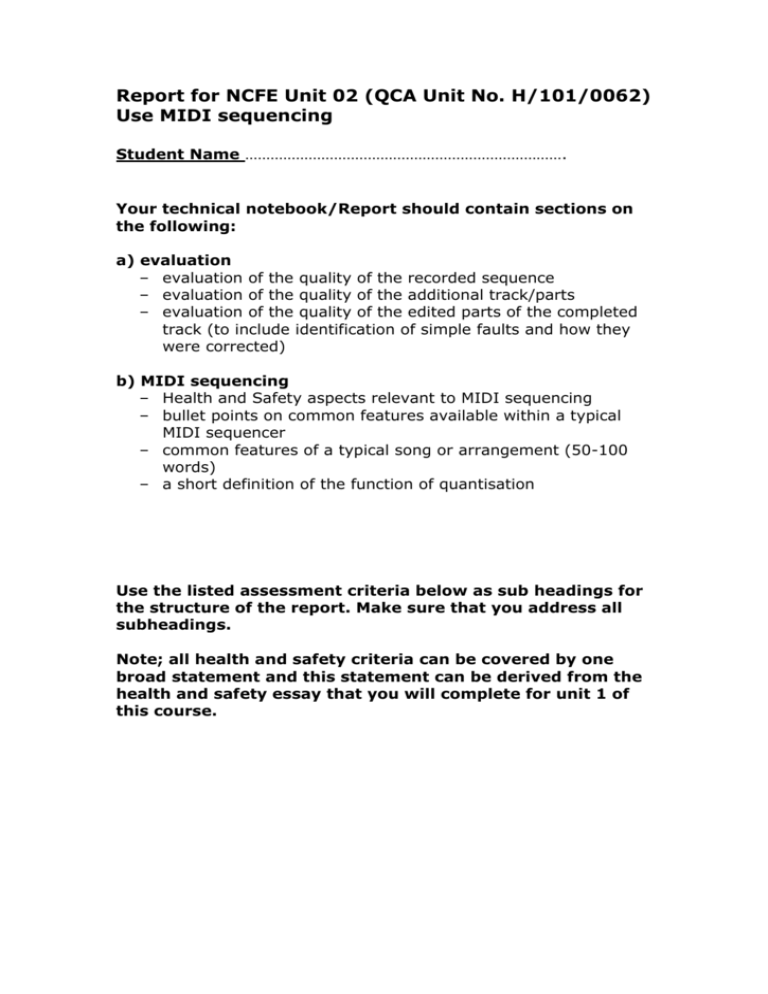
Report for NCFE Unit 02 (QCA Unit No. H/101/0062) Use MIDI sequencing Student Name …………………………………………………………………. Your technical notebook/Report should contain sections on the following: a) evaluation – evaluation of the quality of the recorded sequence – evaluation of the quality of the additional track/parts – evaluation of the quality of the edited parts of the completed track (to include identification of simple faults and how they were corrected) b) MIDI sequencing – Health and Safety aspects relevant to MIDI sequencing – bullet points on common features available within a typical MIDI sequencer – common features of a typical song or arrangement (50-100 words) – a short definition of the function of quantisation Use the listed assessment criteria below as sub headings for the structure of the report. Make sure that you address all subheadings. Note; all health and safety criteria can be covered by one broad statement and this statement can be derived from the health and safety essay that you will complete for unit 1 of this course. Technical Notebook/Report for Unit 02 (QCA Unit No. H/101/0062) Use MIDI sequencing Element 2.1 Prepare a sequencer for operation 2.1.1 Connect all necessary equipment (Observed) 2.1.2 Power up the equipment (Observed) 2.1.3 Start and initialise MIDI sequencer (Observed) 2.1.4 Shut down and close MIDI sequencer (Observed) 2.1.5 Close the sequencer package (Observed) 2.1.6 Power down equipment (Observed) 2.1.7 Identify and correct simple faults (Observed) 2.1.8 Observe correct Health and Safety procedures (Observed) 2.1.9 Basic functions of a MIDI System (Observed) 2.1.10 Basic operations of powering up and powering down the sequencing system (Observed) 2.1.11 Basic configuration of the sequencer (Observed) 2.1.12 Health and Safety aspects relevant to this process 2.2.1 Set up MIDI track (Observed) Element 2.2 Create a MIDI sequence 2.2.2 Assign a sound and MIDI channel number to MIDI track (Observed) 2.2.3 Record a MIDI sequence track (Observed) 2.2.4 Assess the quality of the recorded sequence 2.2.5 Quantise track/part where necessary 2.2.6 Re-record track/part where necessary 2.2.7 Set up and record additional track/parts 2.2.8 Assess the quality of the recorded additional track/parts 2.2.9 Observe correct Health and Safety procedures (Observed) 2.2.10 Common features available within a typical MIDI sequencer 2.2.11 Common features of a typical song or arrangement (50 100 words) 2.2.12 Function of quantisation 2.2.13 Health and Safety aspects relevant to this process Element 2.3 Edit and arrange a sequence 2.3.1 Identify and correct simple faults of the sequence/track 2.3.2 Move, repeat, copy and paste where necessary (Observed) 2.3.3 Undo move, repeat, copy and paste where necessary (Observed) 2.3.4 2.3.5 2.3.6 2.3.7 2.3.8 Split, adjoin and erase parts where necessary (Observed) Edit individual MIDI event where necessary (Observed) Assess the quality of edited parts Observe correct Health and Safety procedures (Observed) Common sequencer arrangement editing facilities (Observed) 2.3.9 Common editing modes available for the MIDI event editing (Observed) Element 2.4 Save and retrieve sequence 2.4.1 2.4.2 2.4.3 2.4.4 2.4.5 2.4.6 Prepare data to be saved (Observed) Save the MIDI sequence Verify that files have been saved correctly (Observed) Retrieve and load MIDI sequencer files (Observed) Observe correct Health and Safety procedures (Observed) Stages involved in saving and retrieving (Observed)
